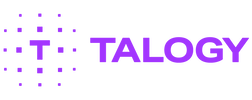Biggest Mistakes Organisations Make When Using Personality Assessments And How To Mitigate Them
|
Most people have heard of personality tests, perhaps at some point being required to complete one for a job application, or maybe being offered the chance to take one as part of a development initiative at work. While they are becoming increasingly commonplace - around 80% of large US organisations are using them* - not everyone has a complete understanding of what they are, how they should be used, and what really constitutes ‘best practice’ application.
*https://www.psychologytoday.com/us/blog/credit-and-blame-work/200806/the-use-and-misuse-personality-tests-coaching-and-development Despite this widespread use within modern organisations, the application and management of personality assessments is not exactly straightforward. There are several common pitfalls businesses should be aware of before deciding if and how to use personality psychometrics either for selection or developmental purposes. |
Most Common Mistakes
|
1. Assuming One Size Fits All
Personality assessments and their results should be considered within the wider business context and what they are being used for. The same test results could be interpreted differently when evaluating candidates for two distinct roles, for example. Equally, in the same way that interview style and structure can look very different between entry and executive levels, it is important to select a personality assessment tool which is aligned with and appropriate for the targeted talent pool. 3. Failing to acknowledge Fallibility of Personality Assessments Personality assessments are nearly always in a ‘self-report’ format, meaning individuals respond to questions about their preferences as they see fit. While personality tools often have in-built mechanisms to detect false and/or inconsistent responses, no tool is infallible if an individual is determined to try and present a certain view of themselves. It is important that organisations acknowledge this by incorporating different assessment methods into their process, while avoiding becoming overly obsessed with some of the smaller data points that a personality tool can produce. While the data as a whole is important, personality assessments are most effective when they add additional context around strength/development themes to an individual’s profile. |
2. Using Personality Assessments in Isolation
Personality tools should always be used alongside other assessment methods as a way of adding an additional breadth to the assessment process but should not be used alone to make hard selection decisions. These assessments are highly effective at adding additional color or context to the assessment of an individual, but other metrics and tools should be considered before any final decisions are made. 4. Not Recognising Importance of Practicality and Cost/Time Effectiveness It is so important for organizations to recognise the value of personality assessments in the context of what they are trying to achieve overall. I have seen highly complex and time-intensive personality tools used for simple candidate filtration in the early stages of recruitment programs. The suitability of a tool for a program will always depend on its position in a process, its importance, and ultimately what kind of value organizations are hoping it will add. Often the addition of a simple, cost effective, time effective, psychometric personality tool can add a lot of value for a fraction of the cost whilst protecting the candidate experience in terms of application length and complexity. |
When managed correctly, personality assessments can be highly effective and add lots of value for businesses. In selection-based programs they can increase the accuracy of selection methods, they can automate, digitize, and streamline selection processes, they can support with avoiding conscious or unconscious bias, and, finally, they can improve person-role, or person- culture, fit. Within development programs, they support individuals understanding of themselves and their self-awareness, highlight key strength and development areas, inform customization of L&D focus or content, and ultimately increase the Employee Value Proposition in terms of investment in talent development, growth, and progression.
My Top Tips for Maximising Value-Add of Personality Assessments
Based on my experience of working with psychometric testing across a range of clients, industries, and geographies – and to recognise some of the benefits above - I would encourage organisations to follow the below tips and advice:
|
Use Robust and Reliable Assessments
There are lots of different personality assessments available and they do vary in approach, quality, development, and validity. Ensure the assessment you choose is appropriate for your requirements and backed up by research and science. Consistency of Test Application Make sure that all candidates or participants are treated consistently. If one individual undergoes a personality assessment for a certain selection or development requirement, others should too. Use Personality Assessments alongside other Tools/Methods Personality assessments should be used as tools to provide additional data and insights around talent pools. While they can be an excellent addition to any evaluation process, they should not be used in isolation and form the only basis for decision making. Ensure the Assessments are Practical and Relevant Different personality tools have different completions times, lengths, complexity, and all of these need to be considered when selecting the test to use; the final decision should be made with the specific project requirements and objectives in mind. |
Customise and Tailor Reporting Outputs
While off-the-shelf personality reports can often be useful, it is also important to consider how the results of a test can be tailored or customized around the target metrics of a project, role, or organisation. Considering the behaviors in an organisation’s Competency Framework is always a good place to start, for example. Get the Messaging Right Recognize that being asked to complete a personality assessment maybe a new or unfamiliar experience for a lot of people, or that it might be part of a process that is incredibly important and therefore perhaps stressful for individuals. Organizations should not assume that their employees or prospective employees will always know exactly what personality assessments are and how they work. It’s incredibly important to get the messaging and position the assessment process appropriately; this should be done pre-launch so that individuals are as comfortable as possible when completing the assessments. Get Support from Experts While personality assessments are relatively well-known within organizational practices, the details behind their administration and application is still quite specialist in nature. Organizations should make sure they are getting the right support from their consulting partners with how they manage assessment processes, especially with regards to how the data is interpreted and/or how the process and output is customised around their specific requirements. |
Final ThoughtsPersonality assessments can be incredibly powerful tools and add great insights and benefits to both selection or development programs, either by increasing the objectivity of recruitment methods, or by supporting individuals within organisations by increasing their self-awareness and knowledge of their personality and likely style. That said, the administration of personality assessments and use is not exactly straightforward, and organizations should be mindful of some of the common pitfalls involved in personality testing, taking care to minimise the potential impacts of these where possible.
|



